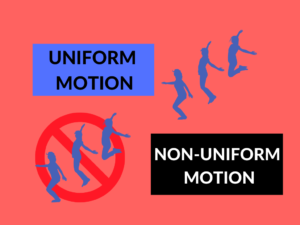Understanding Oscillation and Vibration: A Comprehensive Guide
What is Oscillation?
Oscillation refers to the repetitive motion or movement around an equilibrium position. It is represented by a periodic variation between two points. This motion occurs due to a restoring force that acts to bring the system back to its equilibrium state.
Examples of Oscillation
- Pendulum swinging back and forth
- Swings in a playground
- Electron movement around the nucleus
- Sound waves
Uses of Oscillation
- Timekeeping devices like clocks and watches
- Electronics such as oscillators in radios and televisions
- Energy generation in the form of alternating current (AC)
What is Vibration?
Vibration refers to the rapid oscillating motion of an object around a reference point. It is typically an undesirable motion that may cause disturbances or discomfort. Vibrations can occur in various forms, including mechanical, structural, and even at the molecular level.
Examples of Vibration
- A car engine’s vibrating movement
- A guitar string vibrating to produce sound
- Earthquakes shaking the ground
- Mobile phones buzzing
Uses of Vibration
- Industrial applications like sorting, compacting, and conveying materials
- Sonar technology used in navigation and underwater exploration
- Medical imaging techniques like ultrasounds
- Alert systems such as vibrating alarms
Differences Between Oscillation and Vibration
| Difference Area | Oscillation | Vibration |
|---|---|---|
| Motion Type | Repetitive motion around an equilibrium state. | Rapid oscillating motion around a reference point. |
| Examples | Pendulum, swings, sound waves | Car engine, guitar string, earthquakes |
| Restoring Force | Acting to bring the system back to equilibrium. | Doesn’t necessarily require a restoring force. |
| Intentional Usage | Often intentionally created and utilized. | May or may not be intentionally created. |
| Desirability | Generally considered desirable. | Mostly considered undesirable. |
| Energy Generation | Can be utilized to generate energy (e.g., AC). | Not primarily used for energy generation. |
| Frequency | Can have various frequencies. | Can have a wide range of frequencies. |
| Effects | Often has a predictable pattern and effects. | Effects may vary and can be unpredictable. |
| Applications | Clocks, electronics, timekeeping devices | Sorting, medical imaging, alert systems |
| Common Occurrence | Frequently observed in daily life. | Encountered in various natural and man-made phenomena. |
Conclusion:
In summary, oscillation and vibration are both forms of motion but differ in their characteristics, applications, and desirability. Oscillation involves repetitive motion around an equilibrium state and is often intentionally utilized in various devices, serving purposes such as timekeeping and energy generation. On the other hand, vibration refers to rapid oscillating motion that is typically unwanted, although it does find application in fields like industrial sorting and medical imaging.
People Also Ask:
- What causes oscillation? – Oscillation is caused by a restoring force that acts to bring a system back to its equilibrium state.
- Why are vibrations undesirable? – Vibrations can cause discomfort, disturbances, and even damage to structures or machines.
- Are oscillation and vibration the same thing? – While both involve motion, oscillation is a specific type of repetitive motion around an equilibrium state, whereas vibration refers to rapid oscillating motion around a reference point.
- Can vibrations be beneficial? – Yes, vibrations have practical uses in fields such as industrial applications, medical imaging, and sonar technology.
- How can oscillation and vibration be controlled? – Techniques such as damping, isolation, and vibration absorbers can help control and reduce the effects of oscillation and vibration.


